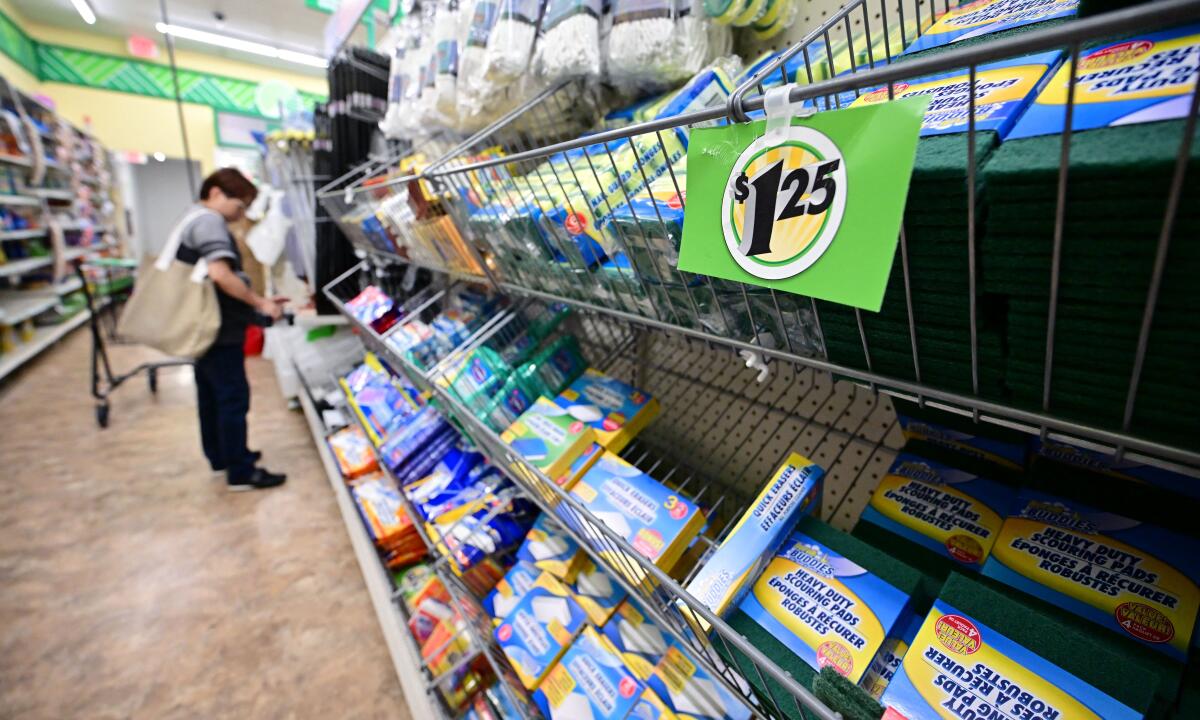U.S. consumer debt jumps as credit card interest rates surge, Fed report shows

- Share via
U.S. household debt climbed at its fastest annual pace since 2008 in the third quarter, with credit card balances surging even as interest rates that lenders charge to consumers hit a multi-decade high.
Households added $351 billion in overall debt last quarter, taking the total to $16.5 trillion, according to data released Tuesday by the Federal Reserve Bank of New York. That’s an increase of 8.3% from a year earlier, the most since a 9.1% jump in the first quarter of 2008. The debt figures aren’t adjusted for inflation.
Most of the latest increase came in mortgage debt, by far the biggest liability on household balance sheets. It rose by $282 billion in the third quarter, and by $1 trillion from a year earlier, to $11.7 trillion. Mortgage and home equity debt combined are up by $2 trillion since the pandemic began.
Credit card debt also increased — at the highest rate in 20 years — with balances rising 15% from a year earlier. The surge comes as the average interest rate on card borrowing has climbed above 19%, the highest in data going back to the mid-1980s, according to Bankrate.
With prices up more than 8% from a year earlier as of the quarter’s end, it’s “unsurprising” that credit balances are increasing, Fed researchers wrote in a blog post. “The real test, of course, will be to follow whether these borrowers will be able to continue to make payments on their credit cards,” the researchers’ post said.
With consumer prices up 8.2% in September from a year ago, bolstered by rising rents and higher costs for food, healthcare and cars, the Fed faces more pressure.
Delinquency rates are currently low by historical standards, as many households saw their finances cushioned by pandemic stimulus payments and savings during the lockdown.
Still, there are signs of “disparate impacts of inflation” in the debt data, the Fed researchers wrote.
Credit card balances increased more for borrowers ages 30 to 59 and for those in lower-income areas. Those groups now owe more than they did in December 2019. By contrast, borrowers ages 60 to 79 and those in higher-income areas still have balances that are below pre-pandemic levels, the researchers found.
There are 191 million Americans with at least one credit card, according to the New York Fed. Many have more than one: The total number of accounts is estimated at 555 million, up by about 100 million from 2016.
In addition to incurring more credit card debt, Americans are also tapping into their home equity to help meet spending needs. For the second consecutive quarter, balances on home equity lines of credit increased.
If you’re looking for airline tickets or a hotel room around the holidays, you’ll probably pay more than you did last year.
Auto loan balances rose by $22 billion in the third quarter and are now above $1.5 trillion, roughly double the figure a decade ago.
With payments and interest on student loans frozen during the pandemic, car debt is on track to overtake student debt as the second-biggest liability for U.S. households, after home mortgages.
More to Read
Inside the business of entertainment
The Wide Shot brings you news, analysis and insights on everything from streaming wars to production — and what it all means for the future.
You may occasionally receive promotional content from the Los Angeles Times.












